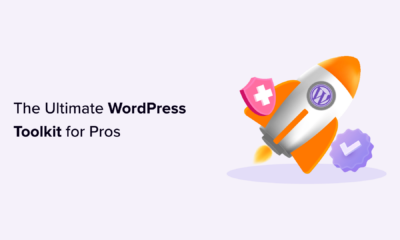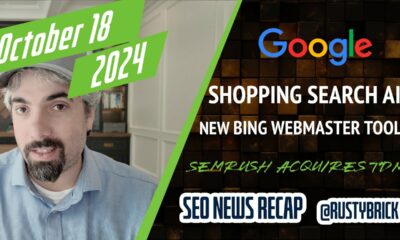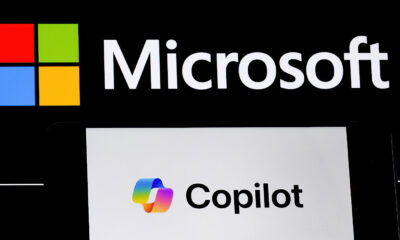MARKETING
Influencer Marketing Experts Pick Their Favorite Tools To Manage Their Programs
An influencer marketing strategy involves more than an influencer and a brand.
“If you want to have robust outcomes, you need to build a relationship with the creator, immerse them in your brand and get their buy-in as a partner. That’s what it takes to produce genuine, trust-driven recommendations their audience will pay attention to,” says Jason Falls, author of Winfluence.
How do you use the tools at your disposal to do that? I asked 16 experts in influencer and content marketing. Let’s look at what they had to share.
Neal Schaffer, author, Age of Influence, says:
Socialinsider helps you analyze a pool of potential influencers once you’ve discovered them. This social media analytics tool allows you to extract public information from potential influencers’ social media accounts. You can do a deep analysis as to what content they publish, what of that content people are most engaged with, as well as publishing and engagement trends. The tool’s “tag” content feature lets you compare and contrast influencers who post similar content to understand who performs better and why.

Jason Falls, author, Winfluence, says:
Tagger has the deep and broad filter – the first step – to driving great influencer collaborations. You can really zero in on the “right” influencers, not just a list of possibilities. Let’s say you want to find the top food influencers in San Francisco with at least 20,000 followers, who have a high percentage of their audience in Sacramento, frequently mention certain wine brands, and have an engaged audience with YouTube content. The extremely specific request can elicit a list from Tagger in a matter of seconds. With most other tools, you get halfway there and then you have to look at each individual’s content manually to go the rest of the way.
If you want to have robust outcomes, build a relationship with the #influencer, immerse them in your brand, and get their buy-in as a partner, says @JasonFalls via @SarahLParkerUK @CMIContent. Click To Tweet
Its new Signals product takes it a step further. Using a social-listening strategy, you can find anyone participating in conversations about a keyword or topic and see where those conversations are happening. You can use it to identify influencers talking about the topic or just listen to the conversation among influencers to inform your content strategy, product decisions, and beyond.

Jeanette Okwu, founder and CEO, Beyond Influence, says:
As an agency, it is crucial to work at scale and with speed. As an influencer marketer, I have demoed, tested, and worked with numerous SaaS solutions like CreatorIQ, Klear, Traackr, and a bunch of smaller ones like lefty, Dovetale, and Woomio, to name a few.
We have opted for Tagger for its massive influencer database to help us run international campaigns on all social media platforms. Its direct access to these platforms allows for best-in-class data capture, which is essential when researching influencers for integrated campaigns. We use it to set benchmarks, KPIs, and instant access to metrics and content analysis are the groundwork of what we do daily.
While there are capabilities like searching for creators based on categories and a set of demographics of their audiences that most competitors have as well, the biggest differentiator for me is their affinity engine as a standout unique selling point. But their discovery and campaign workflow are some of the most sophisticated. Another significant benefit is seeing the overlap between the influencer and a brand audience, which tremendously speeds up the decision process.
@taggermedia’s discovery and campaign workflow are some of the most sophisticated, says @jeanetteokwu via @SarahLParkerUK @CMIContent. #tools Click To Tweet

Facebook Live + InVideo
Mari Smith, CEO, Mari Smith International, says:
My influencer tool of choice for some time now is a combination of Facebook Live video broadcasts coupled with some paid amplification and repurposing clips of the video replay for Facebook and Instagram Reels and Stories using a tool such as InVideo. (Mari is a brand ambassador for InVideo.)
InVideo has the best collaboration features of any video tool I’ve tried. It’s super easy to have multiple team members – or agency plus client – quickly create and publish professional videos.
When I team up with a brand in an ambassador/influencer capacity, I craft an end-to-end campaign that includes a highly educational Facebook Live promoted ahead of time to my own audience. And then, after the broadcast, the brand and I collaborate on paid placement to elevate the reach and results further.

The most effective #content format across @Meta’s family of apps is unquestionably #video, says @MariSmith via @SarahLParkerUK @CMIContent. Click To Tweet
Timothy Hughes, co-founder, DLA ignite, says:
Want a constant stream of leads? How about I pick you up in my car tomorrow, and I drive you to a place where I know all your prospects and customers are hanging out? Sounds great, doesn’t it? All you have to do is go up to them and have a conversation. No need to pitch – in fact, people hate that. Just have natural everyday conversations. Stay as long as you like. The more conversations you have, the more leads you get. That place is LinkedIn. It’s the best tool for anybody who wants to build authority, influence, trust, and get a constant stream of leads.
Brands have the choice to continue to ignore these conversations and keep slapping people with “brochures” from their employees or to empower their teams to have conversations on social and walk the digital corridors.

The best tool for anybody who wants to build authority, influence, trust, and get a constant stream of leads, is @LinkedIn, says @Timothy_Hughes via @SarahLParkerUK @CMIContent. Click To Tweet
Andy Crestodina, co-founder, CMO, Orbit Media, says:
LinkedIn is critical for anyone doing organic influencer marketing, especially in B2B. It’s key for every step in the process:
- Research and identification: Find people actively discussing any topic. You can see their credentials and topics at a glance. And if you plan to promote the content on LinkedIn, you can see their reach and engagement right there.
- Networking and outreach: After a few thoughtful comments, mentions, and shares, they’re likely to accept your connection invitation, giving you implicit permission to message them. It’s an excellent place to start a conversation, which is the first step toward a pitch to collaborate.
- Co-promotion: If the influencer promotion plan has a LinkedIn component, you’re already there. Once the co-created content is live, you can post a quick promotional video with a mention or even host a live conversation. And the engagement on LinkedIn is generally much higher than on Twitter or Facebook.
The LinkedIn platform checks all the boxes for the B2B influencer marketer. I don’t know how to do organic influencer marketing without it.
Although you may not think of it as a tool, @LinkedIn is critical for anyone doing organic #InfluencerMarketing, especially in #B2B, says @Crestodina via @SarahLParkerUK @CMIContent. Click To Tweet

Ashley Faus, content strategy lead, software teams, Atlassian, says:
Employees are the new influencers. The Edelman Trust Barometer shows trust in institutional and formal authorities has been declining for a decade, but people trust people like themselves and technical experts the most. That’s where your employees shine. But it’s hard to track the traditional metrics like reach and engagement for tens or hundreds of individual profiles.
Enter Shield. It allows employees to connect their LinkedIn accounts to a dashboard, so you can see actual reach and engagement over time. It helps your company partner with employees to know which content is resonating with your audience, report high-level reach and engagement trends (plus growth) to leadership, and helps you show the symbiotic relationship between personal profiles and company pages.

Aaron Orendorff, vice president of marketing, Common Thread Collective, says:
Influencer marketing takes time. And sometimes, the “simplest” step of getting your product to an influencer is the hardest part. It’s even harder at scale.
You must collect addresses, sizes, etc. Then you might have to package the product yourself or contact your third-party logistics to flag that order. Or you might go into your Shopify store and create a zeroed-out order. All of which takes time.
The Kynship app lets you significantly speed up this process. It creates orders in no time by efficiently sending multiple products to multiple influencers in a matter of a few clicks. Other competitors offer seeding components, but they require the influencer to use their time to submit what they want, when they want it, and where to send it. The Kynship app puts control in the brands’ hands, giving you the ability to control the timing of campaigns and the quality of relationships.

Jessi Sanfilippo, Founder, Roadie Social, says:
What sets GRIN apart from influencer marketing tools is the deep look at the engagement rates and validity of the influencers’ followings and specifically bots and demographics.
Those two features were critical in projecting outcomes when I worked at a women’s wellness startup. We needed to partner with influencers who had highly engaged, primarily female communities. If you’ve been on the brand or agency side of influencer marketing, you’ve seen a lot of creators or their reps who send media kits with inflated numbers. GRIN really felt like a team member doing the heavy lifting to be sure we would be spending our modest budget effectively and coming as close as possible to the impact and revenue we were expecting.

Katie Stoller, head of influencer marketing, Fiat Growth, says:
I’ve used over 15 tools, and my favorite in terms of execution flow and efficiency is Activate. I used it before Impact acquired it, but the acquisition led to a strong focus on conversion tracking. That is important as we serve fintech companies that aren’t selling tangible products, so there is no e-commerce tracking available. We rely heavily on link tracking across the customer journey (app downloads, email sign-ups, and subscription sign-ups). Many of our clients use Impact for their affiliate marketing and strategic partnership programs. Being able to include influencer marketing in the mix is incredibly helpful.
Activate has great features that allow you to propose and negotiate in the tool. It also allows you to capture individual Instagram story frames and download them with their related metrics. Activate also seems to shave time off managing programs, especially when working with more than five influencers at one time.

Michael Brito, global head of analytics, Zeno Group, says:
Most of the 40-plus tools in the influencer marketing space offer little to no value for B2B and enterprise technology companies, except for Onalytica. Its discovery module allows marketers to combine bio and content searches. They have also created a robust taxonomy that can segment influencers by industry, job function, vertical, etc.
Users can analyze influencer conversations and engagement. It’s similar to a social listening platform but only listens to the influencers within a project. This is critical for B2B influencer marketing programs. Also, Onalytica is one of the first to launch a B2B marketplace that connects tech influencers with B2B brands.

@Onalytica is one of the first companies to launch a #B2B marketplace that connects tech #influencers with B2B brands, says @Britopian via @SarahLParkerUK @CMIContent. Click To Tweet
Crystal Duncan, senior vice president and head of influencer marketing, Tinuiti, says:
In my 15 years in the influencer marketing industry, I have found there isn’t one tool that does it all perfectly for every brand or agency. I always recommend doing the research, having an understanding of what your budget is, and weighing the benefits of the tool, which will make your day-to-day easier.
One of my favorite tools is gen.video, as it has tracking capabilities to help showcase sales data from influencer content. Understanding how influencers are impacting the bottom line is hugely important for our clients and campaigns.

Tom Augenthaler, founder, 551 Media and The Influence Marketer, says:
Finding influencers is one thing but vetting their followers to make sure they are legit is another. With many wannabe influencers buying fake followers to look impressive, it’s imperative to know the makeup of their audience, including a breakdown of real people, mass followers, fake followers, suspicious accounts, and other influencers.
That’s when I turn to HypeAuditor. The robust influencer marketing tool can be used to find influencers, track campaigns, competitors, and identify trends. I rely on it to assess the veracity of an influencer’s audience. I really appreciate the charts measuring follower growth over time, so you can see spikes in new followers as well as drop-offs. Spikes in growth sometimes indicate the purchase of followers. Another plus is that you can download PDF versions of the influencer reports. Right now, Instagram, TikTok, and YouTube are covered by HypeAuditor, but I expect they will add more social platforms moving forward.
Use @HypeAuditor to check that your influencers’ followers are genuine, says @taugenthaler via @SarahLParkerUK @CMIContent. Click To Tweet

Lenox Powell, content director, Semrush, says:
BuzzGuru brings ease, simplicity, and transparency to the process of finding compatible influencers. It rolls influencer discovery, analysis, and competitive intelligence into one app. Specifically, it gives valuable insight and analytics on influencers’ performance across multiple platforms (YouTube, Instagram, Twitch, and TikTok), so you can find partners who best align with your marketing needs.
Among its top three benefits – streamlined search, global selection, and competitor and industry insights. Its database of over 21 million influencers has met strong authenticity and performance criteria. Advanced filter combinations and search features (keywords, video mentions, etc.) make it possible to find influencers whose audience aligns with your target audience.
In addition to filtering your search by platform, ad mentions, advertising budget, etc., you can refine by broadcast language and country. You also can search competitors, market leaders, and others in your industry to see if they’re working with influencers. You can see who they’re partnering with, the types of campaigns they are running, their budget, and the influencer’s performance.

Clint Mally, content marketing educator, ClintMally.com
Use your YouTube channel, podcast, or other platform as the reason to connect with influencers in your target industry. I recently created a YouTube video, podcast, and article from a one-hour conversation with Andy Crestodina.
Then, I used SparkToro to find other influencers who have some connection to Andy and are more likely to say yes since Andy had worked with me earlier. I found influencers who could contribute quotes under the social section, future collaborators under the podcasts and YouTube section, and influencers to pitch for guest blog submissions under the website’s section.

I was also able to connect with people like Ann Handley, Rand Fishkin, and Mike Stelzner who might never have talked to me otherwise. All you need is for one person to say yes to make this work.
Finding what’s right for your program
Jessy Grossman founded the networking organization Women in Influencer Marketing. She’s seen over a dozen of the most popular tools demonstrated in their virtual event – The Best in Influencer Tech.
“There’s not a one-size-fits-all solution for anyone. The pricing varies wildly, she says. “The ideal is that they’d all come together to provide one suite of tools. Since that’s highly unlikely, I suggest that – if the budget allows – to use a few of them to mix and match.”
Cover image by Joseph Kalinowski/Content Marketing Institute











You must be logged in to post a comment Login